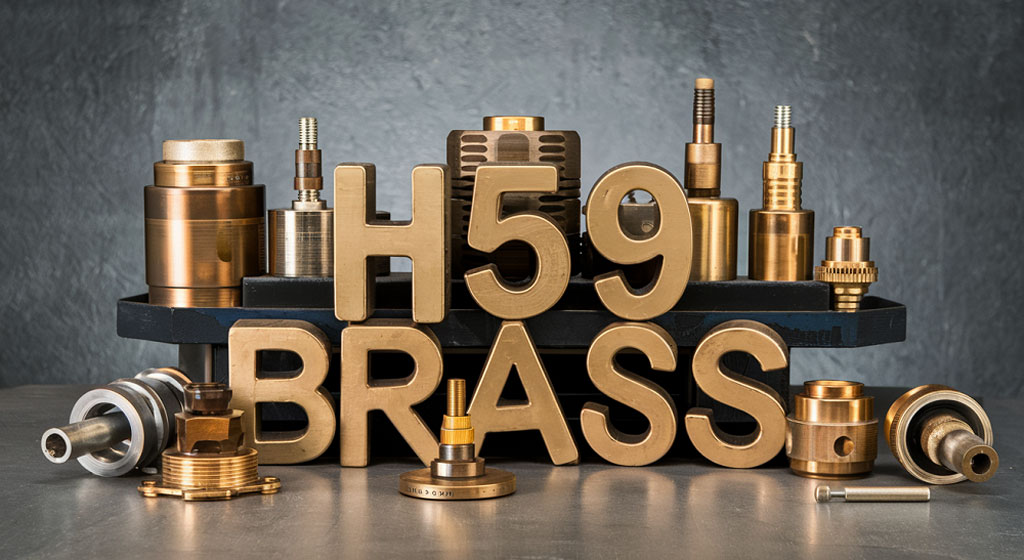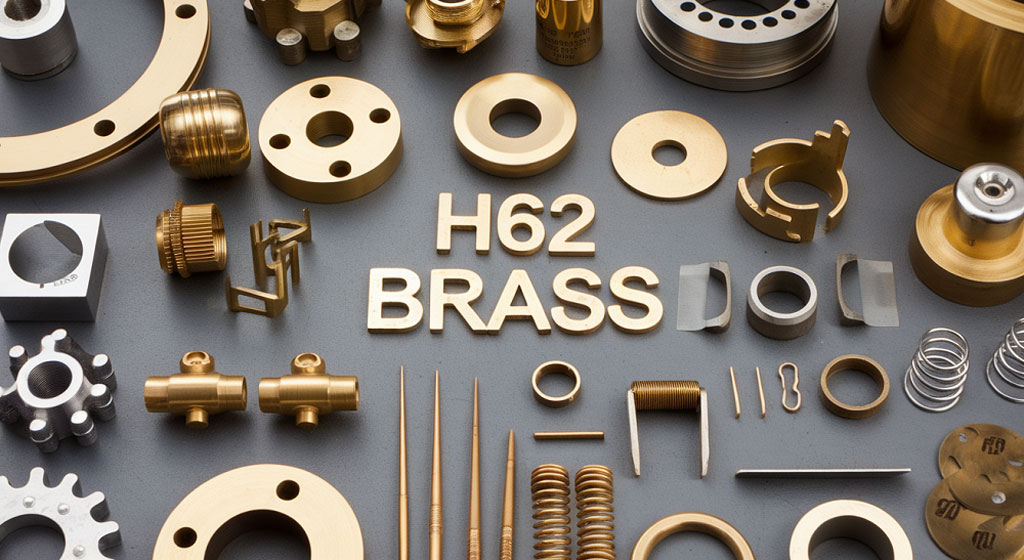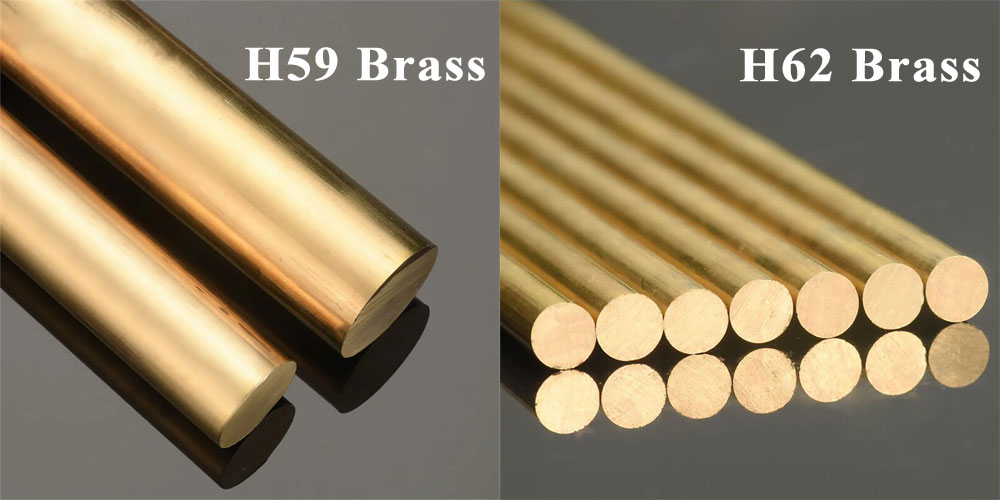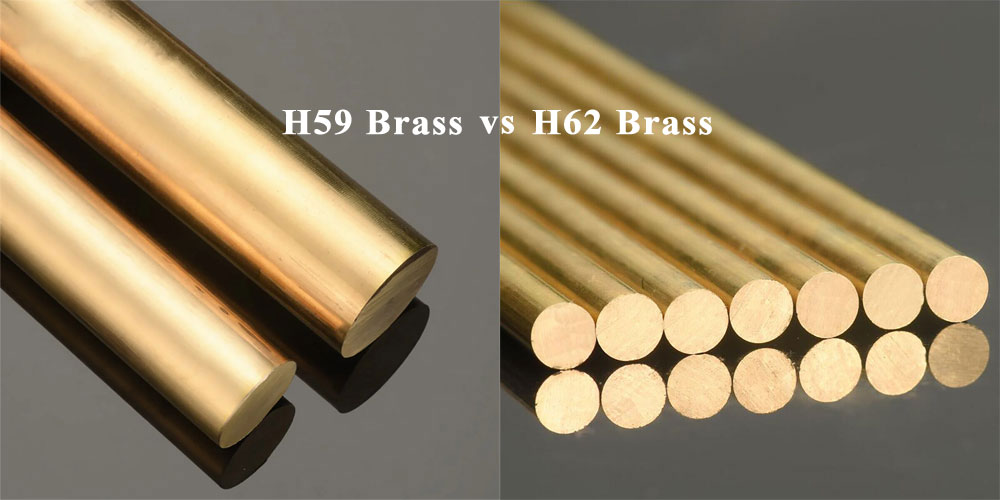Brass is one of the most versatile materials used in sheet metal manufacturing and industrial applications. Brass alloys, primarily composed of copper and zinc, are available in various compositions, each offering distinct characteristics tailored to specific requirements.
Among the many brass grades, H59 brass and H62 brass are two of the most commonly used alloys. Despite being similar in their copper-to-zinc ratios, these two alloys differ in several critical aspects, including composition, machinability, corrosion resistance, and strength.
This article will explore the differences between H59 and H62 brass, helping you understand which material is best suited for your project.
What Is H59 Brass?

H59 brass is an alloy that contains approximately 59% copper, with the remainder primarily being zinc. This semi-copper brass is highly valued for its good corrosion resistance and strong mechanical properties.
It has a balanced mix of strength, hardness, and machinability, making it a reliable option for a wide range of applications, especially those requiring durability and resistance to environmental wear.
Key Characteristics of H59 Brass:
- Copper Content: With 59% copper content, this alloy presents a reddish-golden hue and boasts enhanced strength and corrosion resistance.
- Zinc Content: Around 40%, balancing the alloy’s hardness and workability.
- Machinability: While it is not the easiest brass to machine compared to other alloys, it still offers good machinability, especially in situations that don’t require extremely intricate parts.
- Corrosion Resistance: H59 brass is known for its outstanding corrosion resistance, especially in marine or outdoor environments. Its ability to withstand oxidation makes it ideal for use in harsh or wet conditions.
- Strength and Durability: H59 brass provides high tensile strength, which is ideal for producing high-stress components that need to endure harsh environments.
Common Applications of H59 Brass:
- Precision Parts: Due to its strength and machinability, H59 brass is often used in producing precise mechanical components like gears, valves, and bushings. It is favored in industries where precision and longevity are required.
- Marine Equipment: Due to its seawater corrosion resistance, H59 brass is commonly used in marine applications like boat fittings, propellers, and piping components.
- Electrical Components: H59 is also favored for electrical connectors and terminals, where both high conductivity and corrosion resistance are crucial.
- Aerospace Parts: The alloy’s high strength-to-weight ratio makes it suitable for certain aerospace components.
What Is H62 Brass?

H62 brass, on the other hand, contains about 62% copper, 36% zinc, and around 2% lead. The addition of lead makes it much easier to machine, enhancing its machinability and allowing manufacturers to mass-produce smaller components with greater ease.
However, the tradeoff is that H62 brass doesn’t have the same level of corrosion resistance as H59 due to the presence of lead, which can weaken the alloy’s ability to withstand environmental stress.
Key Characteristics of H62 Brass:
- Copper Content: 62%, providing a more yellow-gold color and slightly enhancing its strength compared to H59 brass.
- Zinc Content: Around 36%, which gives the alloy its hardness but at the cost of slightly reducing its overall corrosion resistance.
- Lead Content: 2%, which improves machinability and makes it much easier to cut and shape into complex forms.
- Corrosion Resistance: While H62 brass provides solid corrosion resistance, it is not as effective in extreme environments, particularly in marine or damp conditions, when compared to H59 brass.
- Machinability: A standout feature of H62 brass is its remarkable machinability. The addition of lead allows manufacturers to produce a wide variety of components with high precision and at a faster rate.
- Strength: H62 is softer and has lower tensile strength compared to H59 brass, which means it is more suitable for parts that do not require high levels of stress resistance.
Common Applications of H62 Brass:
- Machined Components: H62 is widely used in manufacturing small, intricate parts such as screws, bolts, nuts, and threaded components due to its superior machinability.
- Furniture and Decorative Items: Its attractive yellow-gold color and ease of shaping make it ideal for producing decorative fittings, handles, and trim pieces.
- Plumbing and Electrical Fittings: It is used in manufacturing various plumbing and electrical components that are not exposed to extremely harsh conditions.
- Automotive Components: Parts such as fittings and small mechanical components in the automotive industry are often made using H62 brass due to its combination of ease of machining and acceptable mechanical properties.
Key Differences Between H59 and H62 Brass

1. Copper Content
H59 has 59% copper, while H62 has 62%. The higher copper content in H62 gives it slightly greater strength and a more attractive yellowish hue. However, the distinction between the two alloys is relatively minor when weighed against other factors.
2. Zinc Content
H59 contains around 40% zinc, while H62 has slightly less zinc at 36%. This difference influences the hardness of the alloys, with H59 being slightly harder and more durable.
3. Lead Content
One of the most significant differences between H59 and H62 brass is the presence of lead in H62. H59 is free from lead, offering better corrosion resistance and making it more suitable for applications exposed to moisture and saltwater. In contrast, the 2% lead content in H62 enhances machinability but reduces the alloy’s ability to resist corrosion.
4. Corrosion Resistance
H59 brass has superior corrosion resistance, particularly in marine or moisture-laden environments, making it ideal for high-demand outdoor applications.
H62 brass, containing lead, has lower corrosion resistance and is more appropriate for indoor applications or environments with limited moisture exposure.
5. Machinability
H62 brass is the clear winner when it comes to machinability. The addition of lead allows for faster cutting speeds, cleaner cuts, and the ability to produce intricate components more easily.
H59 brass, while still machinable, is not as easy to work with due to its lack of lead. This means that it is better suited for projects requiring higher strength, but it may require more effort during manufacturing.
6. Strength and Durability
H59 brass is stronger than H62 and can handle higher stresses and strains without deforming. This makes it the preferred choice for parts that need to withstand extreme pressures, such as mechanical components in engines or marine environments.
H62 brass, although softer, is ideal for smaller components that do not need to endure heavy mechanical stress.
Which One Should You Choose?
The choice between H59 and H62 brass depends on the specific requirements of your application.
- If corrosion resistance and strength are critical, especially in marine or high-moisture environments, H59 brass is the better choice. It’s ideal for durable, high-strength components.
- On the other hand, if machinability is your primary concern, and you are making smaller, more intricate parts that will not be exposed to harsh environments, H62 brass may be a better fit. Its superior machinability makes it a favorite in the mass production of screws, bolts, and other small, detailed components.

